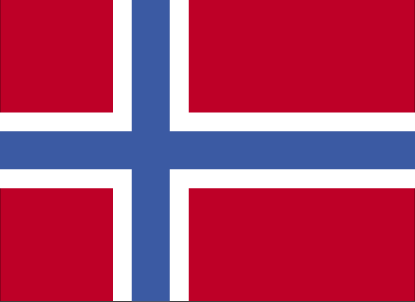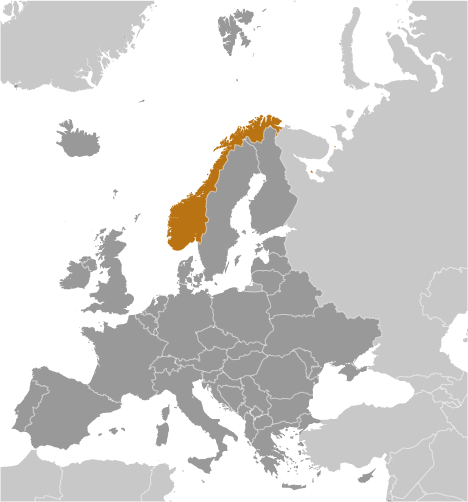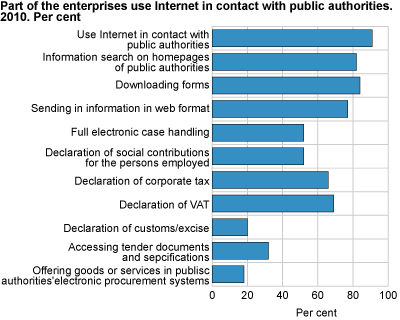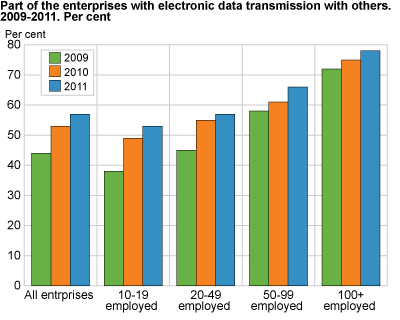

 |
NORWAY |  |
|||||
| IS 540 - Readines for the Networked World | |||||||
| Home | Access | Learning | Society | Economy | Policy | HDI | References |
| NETWORKED ECONOMY - Stage 3 |
|
Public authorities’ websites or home pages are becoming more and more important for Norwegian enterprises.
The share of enterprises that used the Internet in their contact with public authorities has increased from 80% in 2009 to 91% in 2010.
Over four out of five obtained information from public authorities’ websites or home pages; an increase of 10 per cent compared to the last year.
Eighty-four per cent of enterprises visited public authorities’ websites in order to obtain forms and 77 per cent of enterprises returned
completed forms electronically in 2010. Furthermore, over half of all enterprises handled an administrative procedure completely electronically without
the need for paper work, e.g. declaration, registration, authorisation request. Half of all enterprises returned declarations of social contributions for employees electronically. Two out of three did this for declarations of corporate tax. Meanwhile, seven in ten enterprises used the Internet to return VAT declarations. In 2010, one out of three enterprises used the Internet to access tender documents and the specifications in electronic procurement systems of public authorities, while 18 per cent of enterprises offered goods or services through public authorities’ electronic procurement systems (eTendering). The share of enterprises with a website or home page was 79%, which was unchanged compared to last year’s figure. There was considerable diversity in the facilities of enterprises’ websites or home pages. Two out of five have product catalogues or price lists available on their websites or home pages. Three out of ten offer online ordering or reservation or booking, e.g. shopping cart. Services that entail active interaction between the enterprise and the customer are not common. No more than 10% of the enterprises had home pages with facilities for personal adaptation of the product and tracking of orders. Twelve per cent gave the customer a home page with individually adapted content (recognising the customer from previous visits). A total of 43 per cent of the enterprises used the home page for recruiting personnel, while 17 per cent issued a statement about the enterprise’s policy on privacy protection or a security certification. This indicates that large enterprises have generally more advanced websites or home pages than small enterprises, which means they offer more facilities. Sixty-nine per cent of enterprises carried out e-commerce transactions in 2010; either the sale or purchase of goods or services conducted over computer networks. In all, 36% of enterprises made e-commerce sales in 2010. One out of three received orders for products or services placed via websites, while 7 per cent of enterprises made sales via EDI-type messages. EDI (Electronic Data Interchange) is used as a generic term for sending or receiving business information in an agreed format that enables automatic processing. Three out of five enterprises made e-commerce purchases in 2010. Over half placed orders for products or services via websites. EDI-type messages were used by 14% of enterprises in e-commerce purchases in 2010.   |